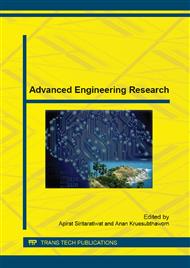p.85
p.89
p.93
p.98
p.102
p.106
p.110
p.116
p.120
3-D Ionospheric Plasma Bubble Model for Ground-Based Augmentation System
Abstract:
The ground-based augmentation system (GBAS) is now an important system for assisting the global navigation satellite system (GNSS) based aircraft navigation during landing phases. Since the ionospheric irregularity is one of the most serious problem in the high-precision GBAS, the impacts of ionospheric irregularities to GBAS in many countries need to be studied before actual installation and operation. However, most of previous studies are based on the rare ionospheric storm events observed in US in the mid-latitude region. For Thailand, which is located in equatorial and low-latitude region, the ionospheric irregularity known as plasma bubble is a common phenomenon after sunset, considered to have adverse impact to the integrity of GBAS operation. In this paper, we propose a simple 3-D ionospheric plasma bubble model for studying its impacts on GBAS operation in Thailand. The background electron density generated by the NeQuick2 model combined with the rectangular depletion are used in the near real-time simulation.
Info:
Periodical:
Pages:
102-105
Citation:
Online since:
August 2015
Authors:
Keywords:
Price:
Сopyright:
© 2015 Trans Tech Publications Ltd. All Rights Reserved
Share:
Citation:


